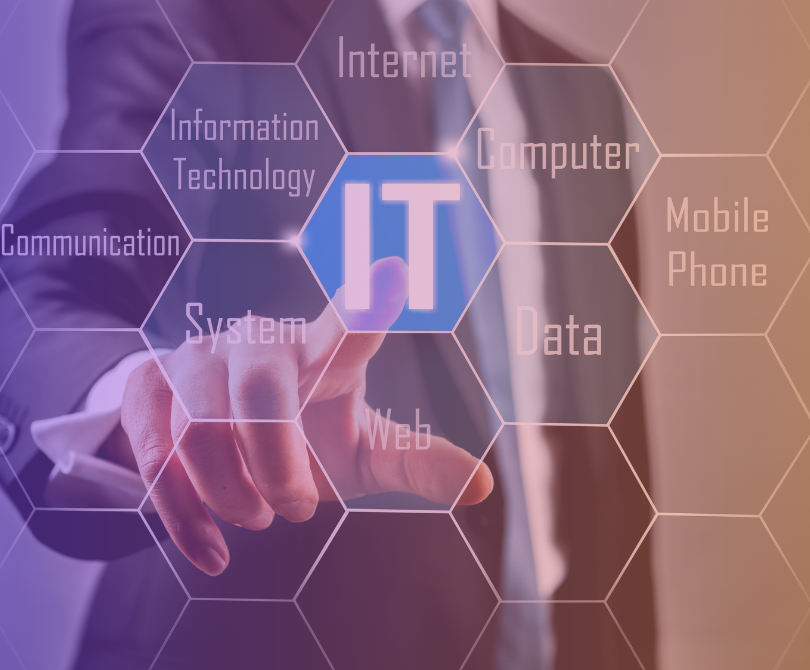Exploring the Diverse Types of IT Support Services
In today’s fast-paced digital landscape, technology has become integral to our personal and professional lives. From powering business operations to enabling seamless communication, technology has transformed the way we interact with the world around us. However, as technology advances, it brings with it an array of challenges and complexities that can hinder its smooth operation.
This is where Information Technology (IT) support services come into play. These services encompass a wide range of solutions designed to address technology-related issues, ensuring that systems run smoothly and efficiently.
The Multifaceted World of IT Support Services:

IT support services encompass a diverse range of solutions that span from simple technical assistance to complex problem-solving. Each type of service addresses specific challenges, ensuring that technology operates seamlessly for users. Let’s explore the various types of IT support services in more detail:
1. Help Desk Support
The first point of contact for many individuals seeking technical assistance is the help desk. Help desk support involves providing immediate solutions to users’ queries and issues. Whether it’s a software glitch, a forgotten password, or guidance on using specific applications, help desk professionals offer prompt assistance through various communication channels like phone, email, or chat.
Their expertise and swift response contribute to reducing downtime and ensuring that users can navigate technology smoothly.
2. Remote Technical Assistance
With the advent of remote connectivity, IT support services now offer solutions without the need for physical presence. Remote technical assistance involves IT professionals accessing users’ systems from a distance to diagnose and resolve issues. This approach not only saves time but also eliminates the need for users to wait for a technician to arrive on-site.
Remote technical assistance is particularly effective for troubleshooting software problems, adjusting configurations, and conducting minor repairs, making it a cost-efficient and convenient solution.
Some Key Elements

1. On-Site Support
For complex technical challenges that require physical intervention, on-site support becomes indispensable. Skilled technicians visit the location to assess and rectify issues that cannot be resolved remotely. This can include hardware repairs, network installations, and infrastructure upgrades.
On-site support ensures that critical systems are quickly restored to operational status, minimising disruptions to daily operations.
2. Network and Security Management
In an increasingly connected world, network and security management services play a pivotal role in maintaining the integrity and security of an organisation’s digital infrastructure. IT professionals monitor network traffic, manage configurations, and implement security measures such as firewalls and intrusion detection systems.
Their role is crucial in safeguarding sensitive data, preventing unauthorised access, and staying vigilant against cyber threats.
3. Software and Application Support
As organisations rely on a multitude of software applications, ensuring their optimal functionality is essential. Software and application support involves installing, configuring, updating, and troubleshooting software programs.
IT experts assist users in navigating software-related challenges, optimising performance, and ensuring compatibility across various applications.
FAQs
Software and application support involves assisting users in various aspects of software usage. From installation and updates to troubleshooting and compatibility issues, IT experts guide users through the complexities of software applications.
Hardware maintenance encompasses the upkeep of physical technology components such as servers, desktops, laptops, and peripherals. IT support professionals conduct diagnostics, repairs, and replacements to ensure that hardware functions optimally.
Data backup and recovery services involve creating redundant copies of critical data and establishing protocols to restore information in case of data loss incidents. IT experts implement strategies to regularly back up data to secure locations, ensuring that crucial information can be recovered swiftly and effectively, minimizing the impact of data loss on operations.
Cybersecurity services encompass a range of strategies aimed at protecting digital assets from cyber threats. IT professionals conduct vulnerability assessments, penetration testing, and implement security measures such as encryption and intrusion detection systems.
Cloud services support organizations in navigating the complexities of cloud computing. IT experts help with tasks such as migrating data and applications to the cloud, managing cloud resources efficiently, and ensuring data security in cloud environments.


